My University of New Hampshire Summer Research Experience
Are you interested in conducting scientific research as an undergraduate while being paid to do so?
Olivia Lucia '26, a marine, estuarine, and freshwater biology major, received a Summer Undergraduate Research Fellowship (SURF) from UNH, enabling her to conduct paid research. Her research works toward protecting marine ecosystems, fisheries, and public health. Come along on Olivia's day as an undergraduate researcher.
What am I studying?
My research focuses on Alexandrium spp., a group of phytoplankton that produces saxitoxin, a potent neurotoxin responsible for harmful algal blooms. Using molecular tools like PCR and qPCR, I'm investigating how environmental factors like temperature and salinity affect the production of this toxin at the genetic level. Understanding what drives these toxic events is critical for protecting marine ecosystems, fisheries, and public health.
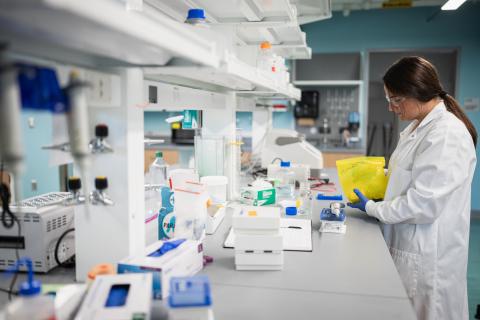
Conducting research in the lab
Morning
5:45 a.m.
Along with conducting research this summer, I work part-time at Aroma Joe’s, a coffee shop in Durham. Most days, I work the opening shift and get my fix of caffeine for the morning. After my shift, I head to Spaulding Hall to get my research work done for the day.
10 a.m.
My research involves working with Alexandrium spp., a type of phytoplankton known to produce harmful toxins like saxitoxin. Today, I’ll start in the Rudman Hall cold room, where we keep our cultures of phytoplankton, checking on my cultures that have been growing under controlled conditions in F/2 -Si media. This is a nutrient-rich seawater mixture commonly used to grow marine phytoplankton, with the silica (Si) component removed since Alexandrium does not require it.
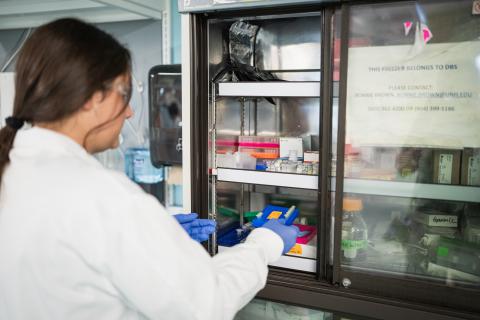
Conducting research in the lab
10:30 a.m.
I do a visual inspection of the cultures, checking for color changes or signs of contamination. Then, I bring them back to Spaulding Hall, where I use the flow cytometer to measure cell density and determine whether the cultures have grown enough to be filtered. Using a software program called GuavaSoft 3, I run samples through the cytometer for three minutes each to assess their growth.
11:15 a.m.
If the cultures are ready to be filtered, I set up my 0.2 micrometer filters to begin the dilution series (100 mL, 10 mL, and 1 mL culture dilutions). This helps prepare for DNA extractions later. Filtrations can take a while, so I usually listen to a podcast or playlist while waiting.
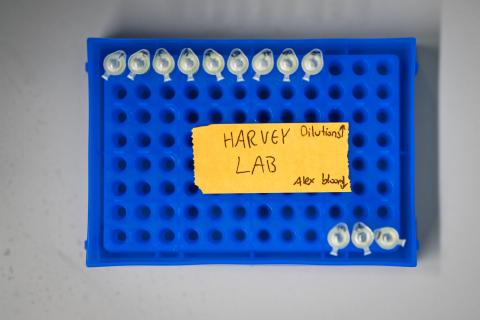
Research equipment for my summer undergraduate research
Afternoon
12 p.m.
It's time to start a DNA extraction from the diluted Alexandrium culture samples I prepared earlier. I use the ZymoBiomics DNA Miniprep kit, which involves multiple centrifuge steps and buffers. It's a detailed process that requires attention to detail to avoid contamination, so I’m super focused during this part.
2 p.m.
Once DNA extraction is done, I run my samples through the Qubit fluorometer to determine DNA concentration. The goal is to make sure I have enough high-quality DNA before I proceed to PCR (polymerase chain reaction), which amplifies specific DNA regions to confirm gene presence. If gene presence is confirmed, I can then proceed to qPCR (quantitative PCR), which not only amplifies DNA, but also measures how much of the gene is present in real time.
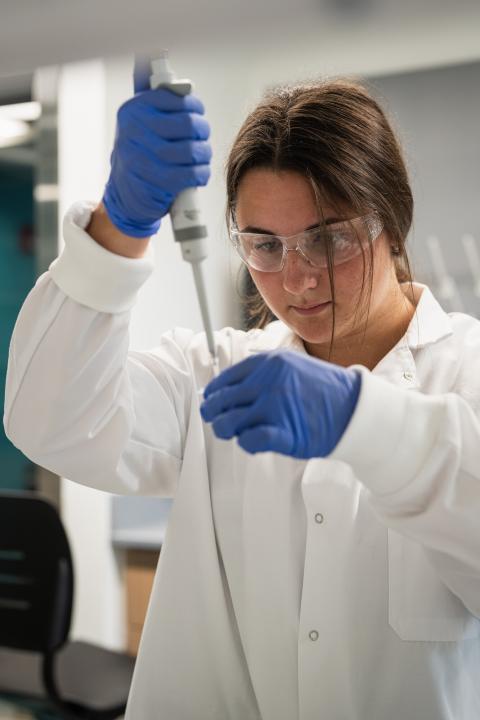
Conducting research in the lab
2:45 p.m.
If my DNA concentrations look good, I prep for PCR, which is used to screen for the sxtA gene, one of the genes responsible for saxitoxin production in Alexandrium. I make a mastermix using OneTaq Hot Start Master Mix (which contains DNA polymerase, nucleotides, and buffer), along with my specific forward and reverse primers that target the sxtA gene, and nuclease-free water. I then load the samples into a thermocycler, a machine that cycles through different temperatures to amplify the targeted DNA sequences.
3:15 p.m.
While PCR is running, I prepare an agarose gel by combining buffer, agarose powder, and SYBR Safe dye, then pour it into a tray to set, with a comb that creates multiple wells. Once the PCR cycle is complete, and the gel has solidified, I load each well with a different sample of extracted DNA mixed with loading dye. The gel is then placed into the electrophoresis chamber, where an electric current at 100 volts runs through it for about 45 minutes, allowing me to visualize whether the sxtA gene was successfully amplified.
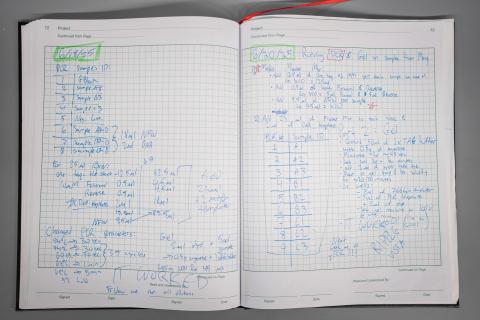
My research notebook
4:15 p.m.
After the gel is done running, I bring the gel tray to the dark room and place it under the UV transilluminator. I typically evaluate multiple samples at once, each loaded into a separate well in the gel. If I see clear bands at the expected size (~766 bp), it means the sxtA gene is present in my sample, a rewarding confirmation after a long setup.
4:45 p.m.
I log all my data in my SURF notebook, including any interesting observations or unexpected results. This helps me track patterns across my samples and troubleshoot any inconsistencies.
Evening
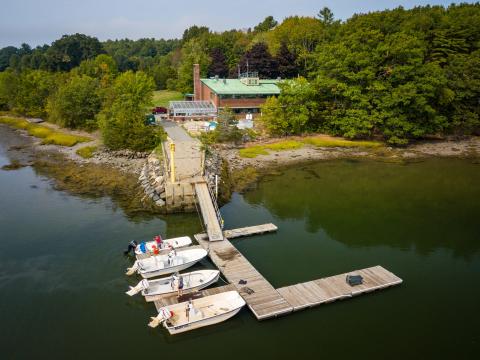
Jackson Estuarine Laboratory
5 p.m.
Before heading out, I check in with my mentor, Elizabeth Harvey, to discuss next steps. These next steps could include running qPCR, planning new experimental cultures under varying environmental conditions, or coordinating our next field sampling opportunity at sites like the Jackson Estuarine Laboratory or the Coastal Marine Lab, where we collect phytoplankton from natural bloom events.
5:30 p.m.
I wrap up, wash my hands about a hundred times (because phytoplankton work gets messy), and head home. My evenings are my self-care time. I like to go for a run or walk, decompress with friends, or watch something light.
